Physical Address
304 North Cardinal St.
Dorchester Center, MA 02124
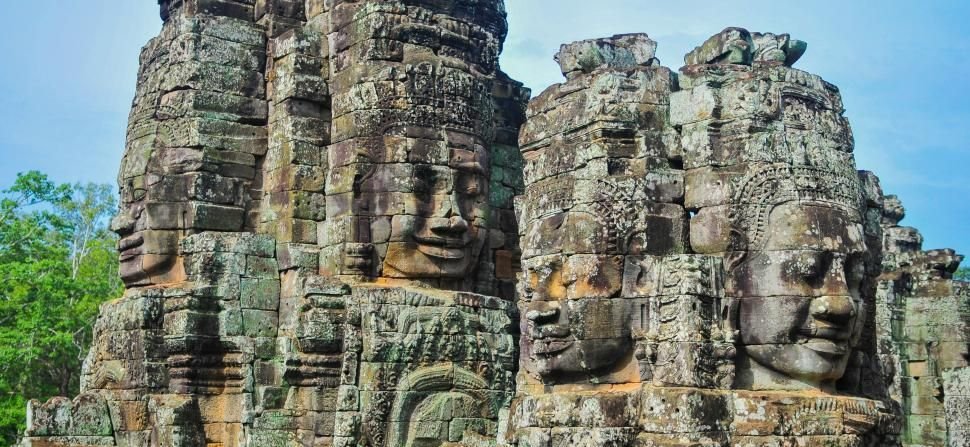
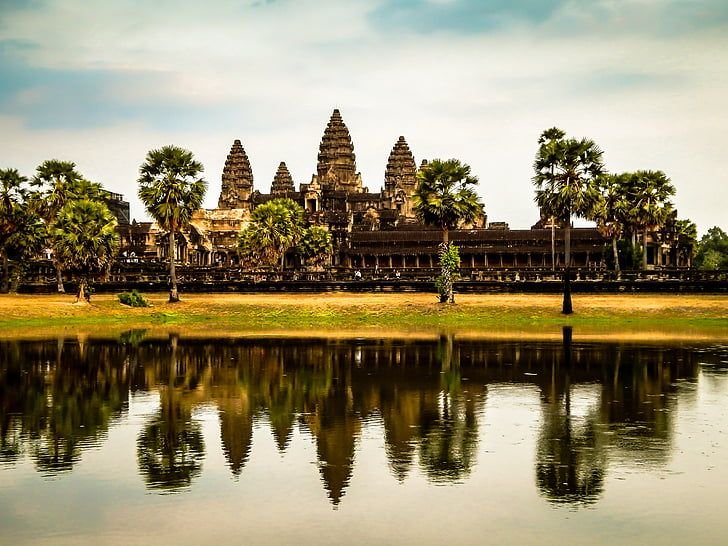
cambodia-hidden cultural gems
Discover hidden cultural gems and immerse yourself in Cambodia’s rich Khmer heritage through authentic local experiences that go beyond typical tourist attractions.
• Discovering Cambodia’s Best Cultural Landmarks • Unforgettable Cultural Experiences: Connecting with Local Culture • Culinary Adventures: Exploring Local Cuisine • Festivals and Events: Celebrating Cultural Diversity • Practical Information for Travelers • Seasonal Travel Insights • Cultural Souvenir Shopping • Fun Facts About Cambodian Culture • Cultural Tips for Travelers • Frequently Asked Questions
Walking through Cambodia feels like stepping into a living museum where ancient stones whisper centuries-old secrets. The morning mist rises from Angkor Wat’s reflection pools while monks in saffron robes pad silently across weathered courtyards, their chants echoing through temple corridors that have witnessed the rise and fall of empires.
Angkor Archaeological Complex: Beyond the Iconic Temples
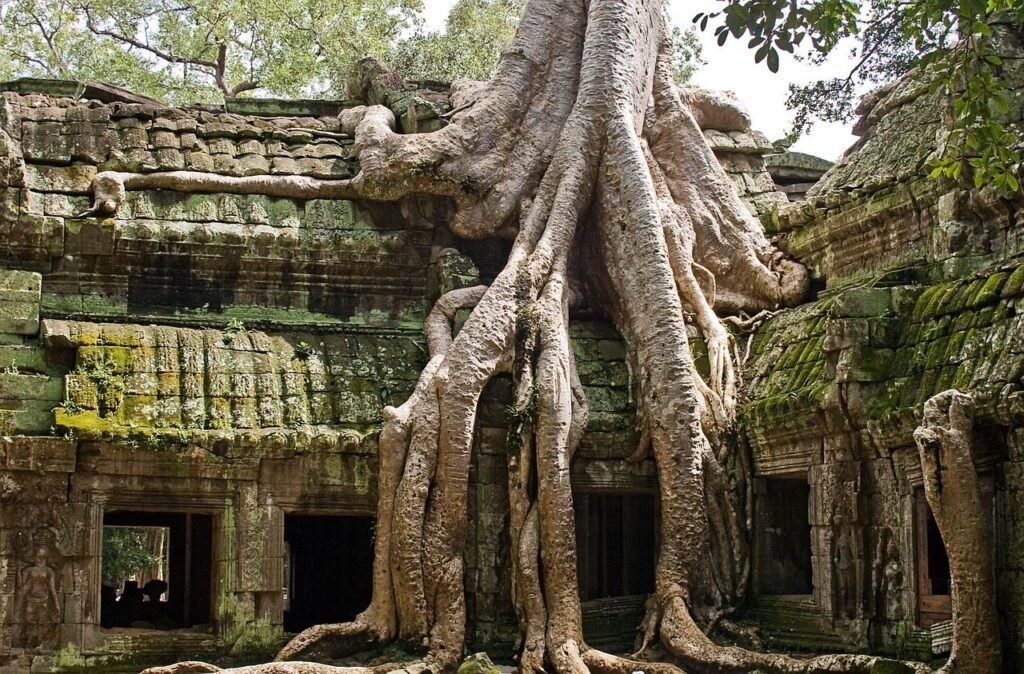
Ta Prohm’s strangler fig trees embrace ancient stones in a dramatic dance
Most travelers rush through Angkor Wat for the sunrise shot, but the real magic happens when you venture into lesser-known temples. Ta Prohm’s strangler fig trees embrace ancient stones in a dramatic dance between nature and architecture. The roots cascade down temple walls like frozen waterfalls, creating cathedral-like spaces where filtered sunlight illuminates intricate carvings.
• Budget tip: Purchase a three-day pass for $62 instead of single-day tickets to explore at a leisurely pace • Local secret: Visit Preah Khan temple during late afternoon when golden light streams through ruined doorways • Transportation: Rent a bicycle for $2-3 daily or hire a tuk-tuk driver for $15-20 per day
Banteay Srei: The Pink Sandstone Masterpiece
This “Citadel of Women” showcases Cambodia’s finest stone carving artistry. The rose-colored sandstone glows like amber in the afternoon sun, while intricate apsara dancers seem to sway in perpetual motion across temple walls. Local artisans still practice similar techniques in nearby villages, connecting past and present through skilled hands.
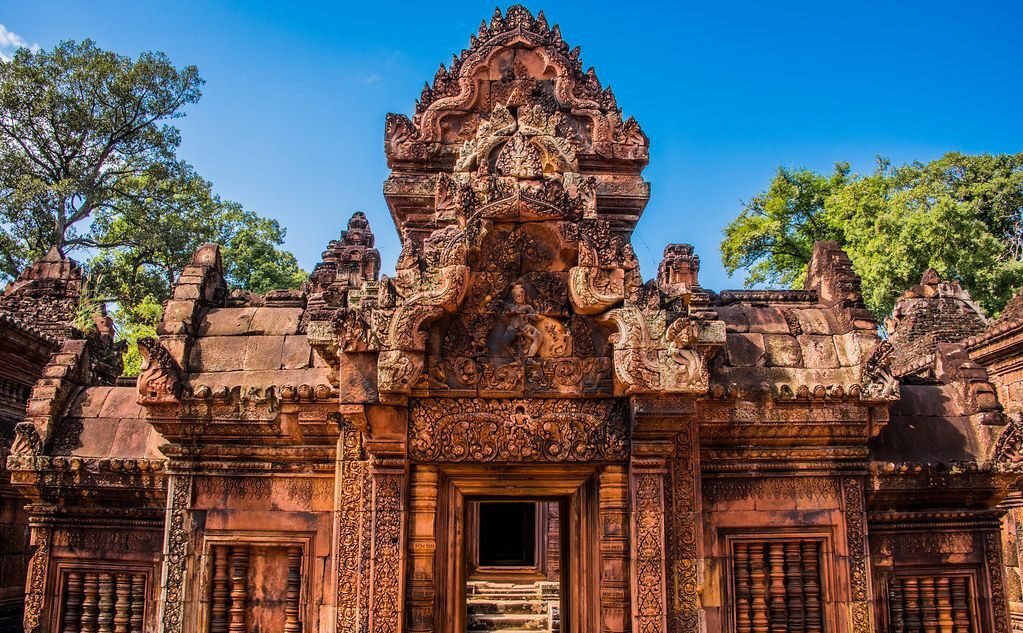
Silver Pagoda and Royal Palace Complex
Phnom Penh’s Silver Pagoda houses over 5,000 silver tiles covering the floor, each reflecting candlelight during evening prayers. The Emerald Buddha, carved from Baccarat crystal, presides over ceremonies where traditional music mingles with incense smoke, creating an atmosphere of timeless reverence.
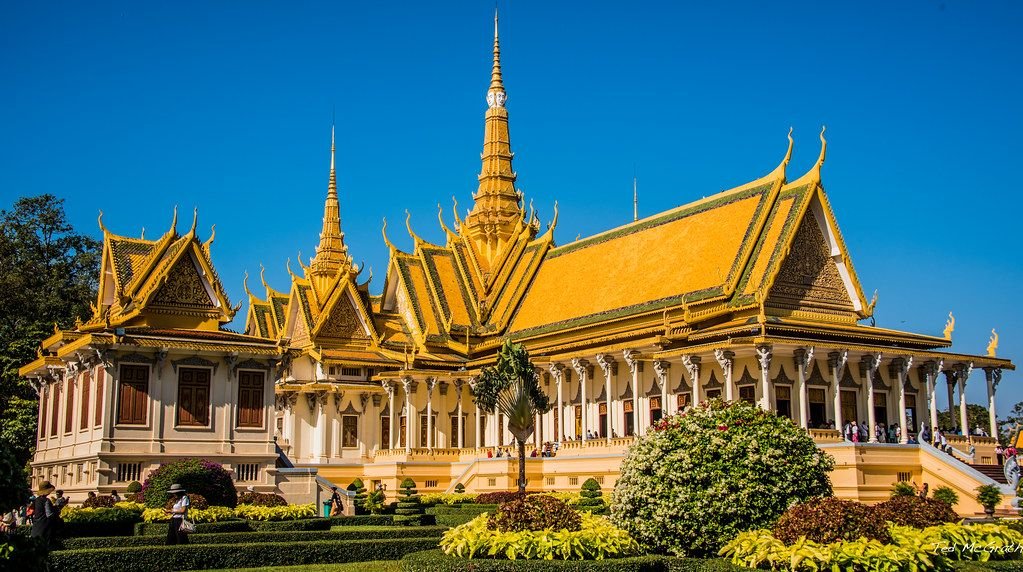
Pagoda Complex – Royal Palace
Master Traditional Khmer Arts
Ancient arts flourish in modern workshops where master craftspeople share techniques passed down through generations. In Siem Reap’s artisan villages, you can learn traditional shadow puppetry, where leather figures cast dancing shadows on backlit screens while narrators chant epic Ramayana tales.
• Pottery workshops: Join local families in Kompong Chhnang, Cambodia’s pottery capital • Silk weaving: Visit traditional looms in rural communities near Siem Reap • Stone carving: Learn from master sculptors who still work on temple restoration projects
Participate in Buddhist Ceremonies
Dawn breaks with the melodic chanting of monks during morning alms rounds. Join locals in offering rice and curry to monks, participating in a ritual that connects communities across Southeast Asia. Many temples welcome respectful visitors to observe meditation sessions and blessing ceremonies.
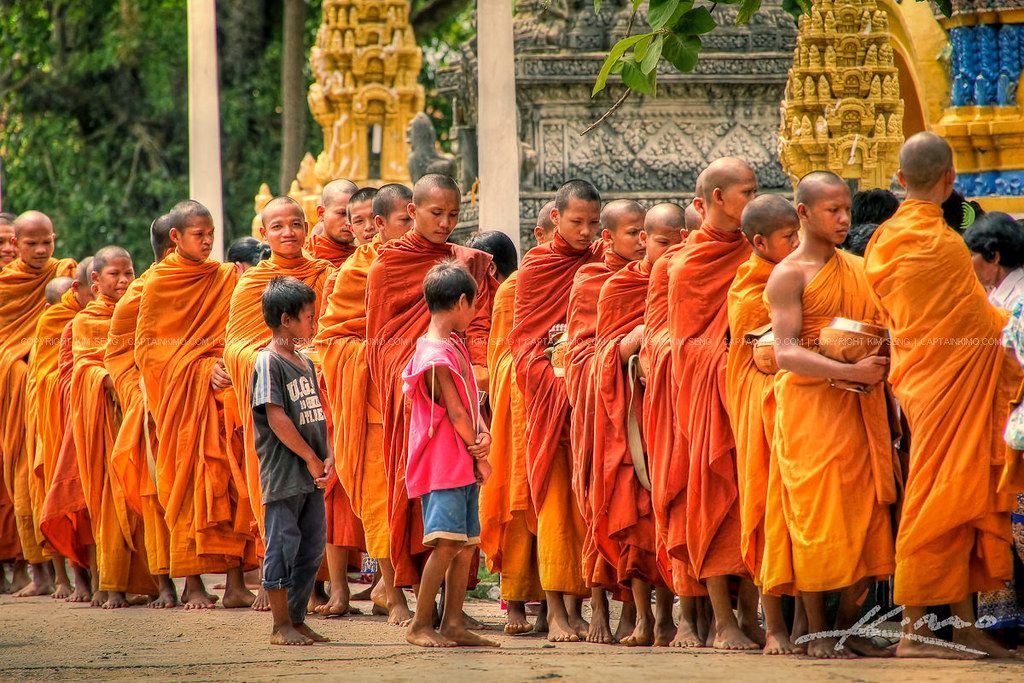
Participate in Buddhist Ceremonies
Village Homestays: Living Like Locals
Experience authentic rural life in floating villages on Tonle Sap Lake, where entire communities rise and fall with seasonal floods. Sleep in traditional stilt houses, help with fishing nets, and share meals prepared over wood fires while children play in boats that serve as their neighborhood streets.
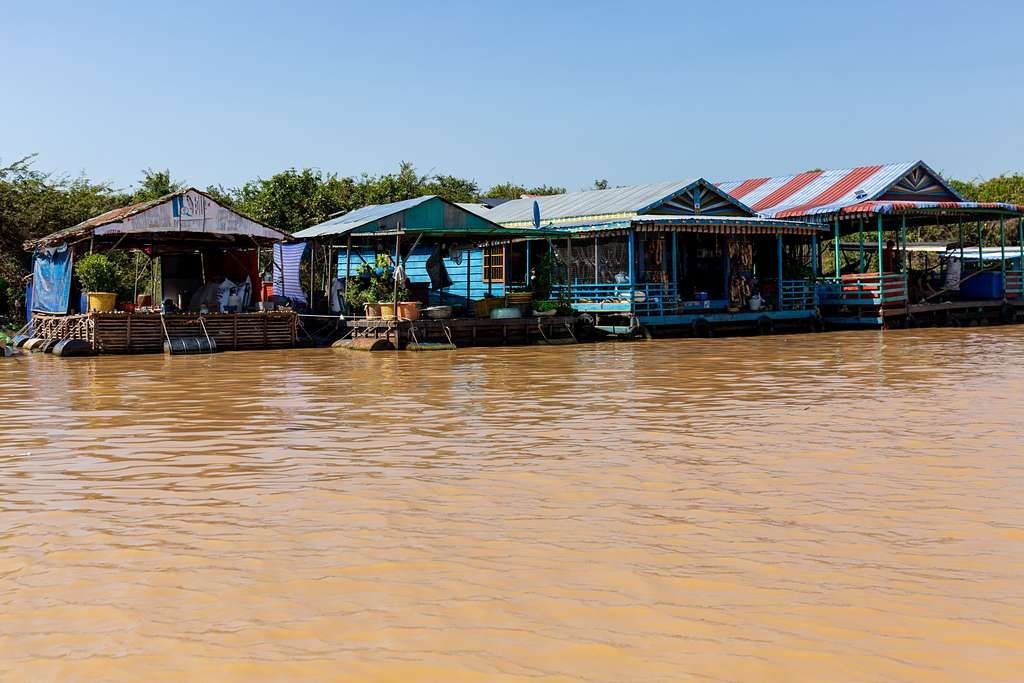
Village Homestays: Living Like Locals
• Cost: $15-25 per night including meals • Best locations: Kampong Phluk, Chong Kneas, or Prek Toal • What to bring: Water purification tablets, insect repellent, small gifts for children
Cambodia’s cuisine tells stories of ancient trade routes, French colonial influence, and resourceful local ingredients. Street food markets become theaters where vendors perform culinary magic over charcoal fires, filling the air with sizzling sounds and aromatic smoke.
Street Food Markets: A Sensory Journey
Phnom Penh’s Central Market buzzes with energy as vendors prepare num banh chok, the country’s beloved breakfast noodle soup. Fresh rice noodles swim in fragrant fish curry sauce topped with herbs, pickled vegetables, and edible flowers that add color and crunch to each spoonful.
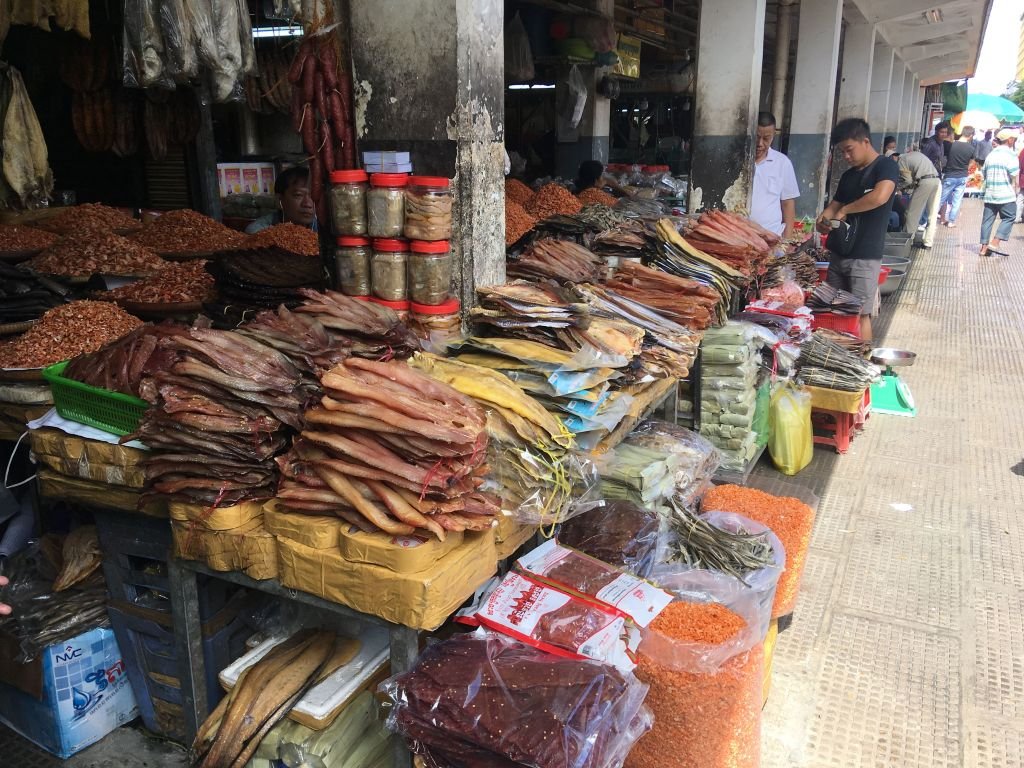
Phnom Penh’s Central Market
Must-try street foods: • Num pang: Cambodian sandwiches with French bread and local fillings ($1-2) • Bai sach chrouk: Grilled pork over rice with pickled vegetables ($2-3) • Kroeung spice paste: The aromatic soul of Khmer cooking • Amok: Traditional steamed fish curry in banana leaves ($3-5)
Cooking Classes with Local Families
Learning to cook amok in a village kitchen reveals the complexity behind Cambodia’s national dish. Families guide you through selecting fresh ingredients at local markets, grinding kroeung spice paste by hand, and steaming delicate fish custard in banana leaf cups over wood fires.
Budget-friendly food experiences: • Local market tours with cooking classes: $15-25 • Street food walking tours: $8-12 • Traditional restaurant meals: $5-8 per person • Family-style dining experiences: $10-15
Cambodia’s festival calendar pulses with celebrations that transform cities into open-air theaters of music, dance, and spiritual devotion.
Water Festival: Bon Om Touk
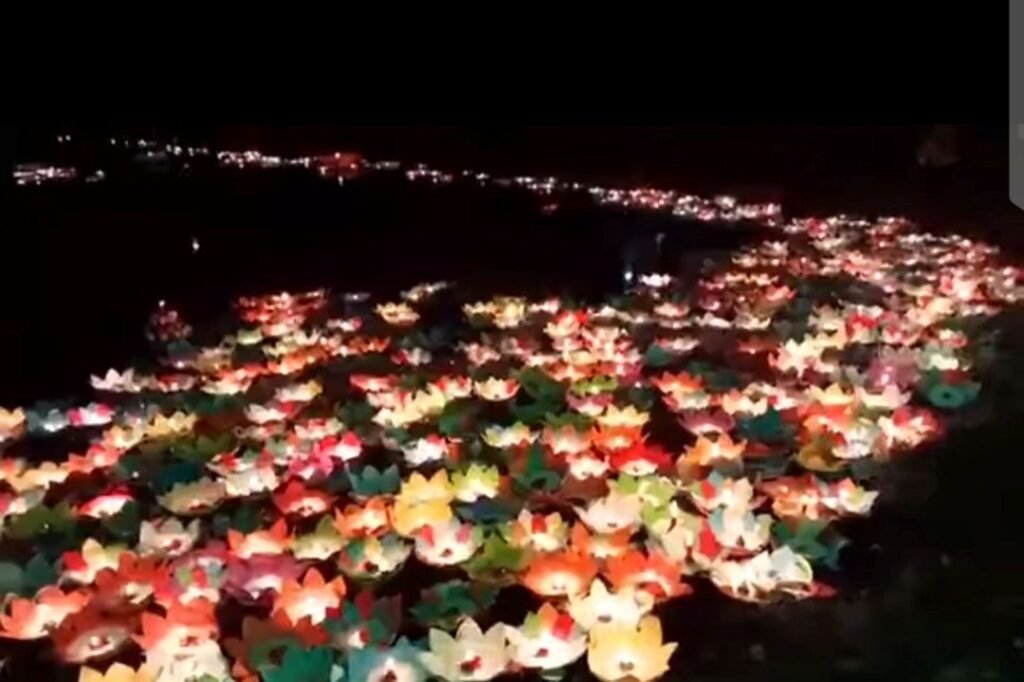
Water Festival-Bon Om Touk
Every November, millions gather along riverbanks for Cambodia’s most spectacular celebration. Traditional dragon boats race down the Mekong while crowds cheer from decorated pavilions. Evening brings illuminated floats drifting downstream like floating fairy tales, accompanied by traditional apsara dances performed under starlit skies.
Pchum Ben: Honoring Ancestors
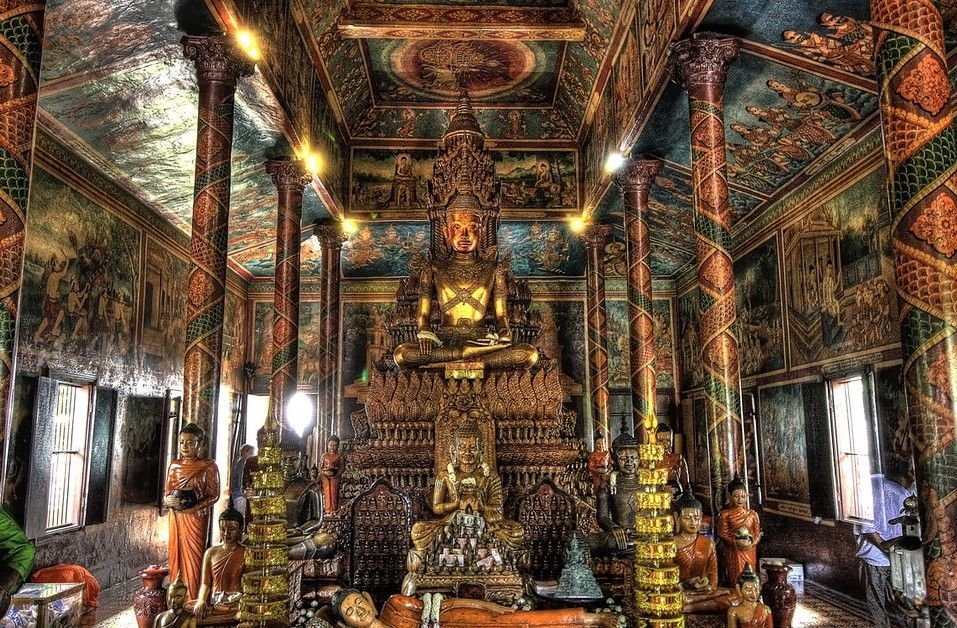
Pchum Ben- Honoring Ancestors
This 15-day festival blends Buddhist spirituality with ancient ancestor worship. Families visit pagodas at dawn, offering sticky rice balls to hungry ghosts and seeking blessings for deceased relatives. The atmosphere combines solemnity with celebration as communities gather for elaborate feasts.
Chaul Chnam Thmey: Khmer New Year
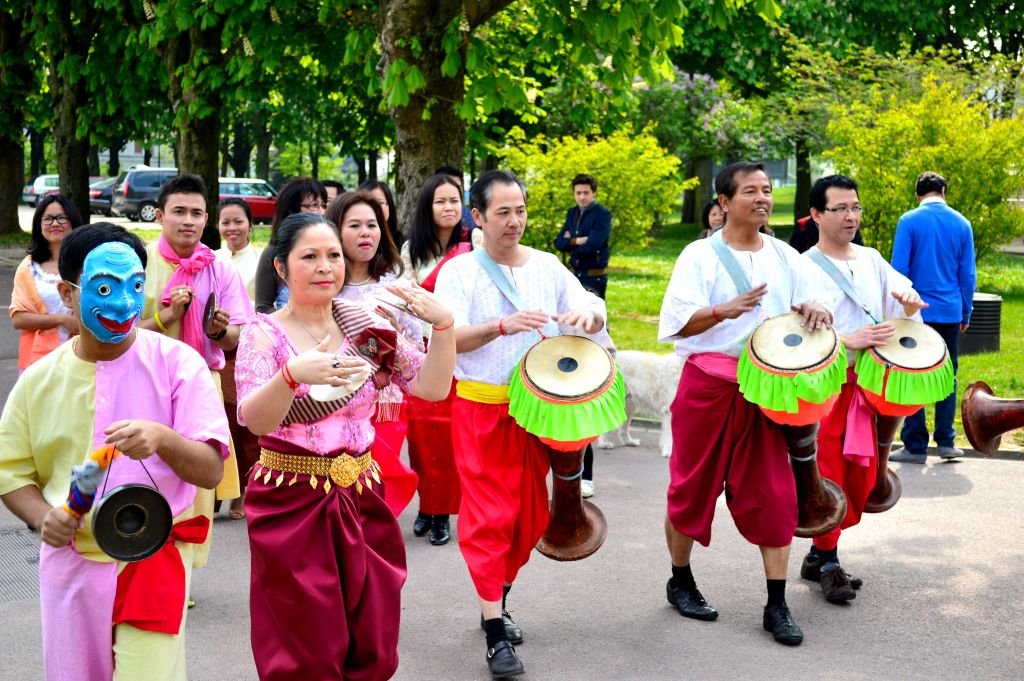
Chaul Chnam Thmey- Khmer New Year
April brings Cambodia’s most important holiday, transforming temples into festival grounds. Water blessings wash away the previous year’s troubles while traditional games like chaol chhoung involve throwing kromar scarves in flirtatious competitions between young men and women.
Visa Requirements and Entry Tourist visas cost $30 for 30 days and can be obtained on arrival or online through e-visa services. Processing takes 3-5 business days for e-visas, making advance planning worthwhile.
Best Times for Cultural Experiences • Dry season (November-March): Perfect for temple exploration and outdoor festivals • Shoulder season (April-May, September-October): Fewer crowds, moderate weather • Rainy season (June-August): Lush landscapes, indoor cultural activities
Transportation Options • Tuk-tuks: $2-5 for short trips, $15-25 for full-day tours • Motorbike taxis: $1-3 for quick journeys • Private cars with drivers: $35-50 per day • Local buses: $1-2 between cities (budget option)
Accommodation for Cultural Immersion • Temple guesthouses: $8-15 per night • Traditional wooden houses: $15-30 • Boutique heritage hotels: $40-80 • Village homestays: $10-20 including meals
Peak Cultural Season: November to March
Cool, dry weather creates perfect conditions for temple exploration and outdoor festivals. Water Festival in November showcases Cambodia’s grandest cultural celebration, while Chinese New Year brings vibrant celebrations in February.
Festival Calendar Planning: • November: Water Festival, temple celebrations • December: Cool weather for Angkor exploration • January-February: Chinese New Year festivities • April: Khmer New Year nationwide celebrations
Monsoon Season Cultural Activities
Rainy season doesn’t stop cultural exploration. Indoor workshops, cooking classes, and traditional performances continue year-round. Temple visits during light rain create mystical atmospheres with fewer crowds and dramatic lighting.
Traditional Markets and Artisan Centers
Siem Reap’s Old Market overflows with authentic handicrafts where bargaining becomes cultural exchange. Artisan workshops surrounding Angkor temples showcase traditional techniques used in temple restoration, offering pieces with genuine historical connections.
Authentic Cultural Souvenirs: • Kromar scarves: Traditional checkered cotton scarves ($3-8) • Silver jewelry: Handcrafted pieces using traditional techniques ($10-50) • Stone carvings: Miniature temple replicas and Buddha statues ($15-100) • Silk textiles: Hand-woven fabrics with traditional patterns ($20-80)
Supporting Local Communities Choose purchases from artisan cooperatives and fair-trade organizations. Many workshops employ former street children or support rural communities, making your souvenir shopping contribute to positive social impact.
Budget Shopping Tips: • Shop at local markets for better prices than tourist areas • Buy directly from artisan workshops to support creators • Negotiate respectfully, starting at 30-40% of asking price • Purchase multiple items for better deals
Cambodia’s cultural heritage contains surprising elements that reveal the complexity of Khmer civilization.
Historical Surprises: • Angkor Wat was originally built as a Hindu temple before becoming Buddhist • The Khmer Empire controlled much of Southeast Asia from the 9th to 15th centuries • Traditional Khmer architecture never uses nails, relying on intricate joint systems • Cambodia has over 4,000 temples and pagodas scattered across the country
Living Traditions: • Shadow puppet shows can last up to seven hours, telling complete epic stories • Traditional music uses scales unknown in Western music theory • Apsara dance requires years of training starting in early childhood • Many temple carvings depict daily life from over 1,000 years ago
Cultural Uniqueness: • Cambodian cuisine blends Indian spices, Chinese techniques, and French influences • The country celebrates both solar and lunar new years • Traditional houses are built on stilts to survive annual floods • Monks’ robes change color during different ceremonies and seasons
Understanding local customs enhances cultural experiences while showing respect for Cambodian traditions.
Temple Etiquette: • Remove shoes before entering sacred buildings • Dress modestly with covered shoulders and knees • Never point feet toward Buddha statues or altars • Speak quietly and avoid flash photography during ceremonies • Walk clockwise around religious monuments
Social Interactions: • Greet with sampeah (prayer-like gesture) rather than handshakes • Accept business cards and gifts with both hands • Remove hats when meeting elders or entering homes • Avoid public displays of affection • Smile frequently – Cambodia is known as the “Land of Smiles”
Dining Customs: • Wait for elders to begin eating • Use fork and spoon instead of chopsticks • Leave small amounts of food to show satisfaction • Tea is served throughout meals • Sharing dishes is common practice
Photography Ethics: • Always ask permission before photographing people • Avoid photographing beggars or poverty • Respect “no photography” signs in temples • Tip performers if you photograph cultural shows • Be sensitive when visiting memorials or sacred sites
What is the best way to experience authentic Cambodian culture? Stay in local guesthouses, eat at family-run restaurants, participate in temple ceremonies, and join community-based tourism activities that directly benefit local families.
How much should I budget for cultural experiences in Cambodia? Budget travelers can explore culture for $20-30 daily, while mid-range experiences cost $40-60. This includes accommodation, meals, temple passes, and activity fees.
Is it safe to travel independently in Cambodia? Cambodia is generally safe for independent travelers. Exercise normal precautions, avoid isolated areas at night, and register with your embassy for longer stays.
What should I wear when visiting temples? Cover shoulders and knees completely. Lightweight, long pants and shirts work best in Cambodia’s climate. Bring a scarf to cover shoulders if needed.
How do I show respect during Buddhist ceremonies? Observe quietly, dress appropriately, remove shoes, avoid pointing feet toward altars, and follow local worshippers’ behavior. Small donations to temple funds are appreciated.
Can I learn traditional crafts during a short visit? Many workshops offer half-day or full-day classes in pottery, weaving, cooking, and carving. While mastering these arts takes years, you’ll gain appreciation for their complexity and beauty.
Ready to embark on your own cultural journey through Cambodia? Book your authentic Khmer heritage experience today through travelgoeasy.net and discover the soul of this remarkable kingdom. What cultural tradition would you most like to experience in Cambodia? Share your travel dreams in the comments below and let’s help you plan the perfect cultural adventure!
Note: This article is exclusively created for and protected by travelgoeasy.net. Unauthorized copying or reproduction is strictly prohibited.
Start planning your Cambodian cultural adventure today! Visit travelgoeasy.net for exclusive flight deals, authentic accommodation options, and carefully curated cultural tour packages that support local communities. Your journey into Cambodia’s rich heritage begins with a single click.
Book your authentic Khmer heritage experience today through travelgoeasy.net and discover the soul of this remarkable kingdom. What cultural tradition would you most like to experience in Cambodia? Share your travel dreams in the comments below and let’s help you plan the perfect cultural adventure!




